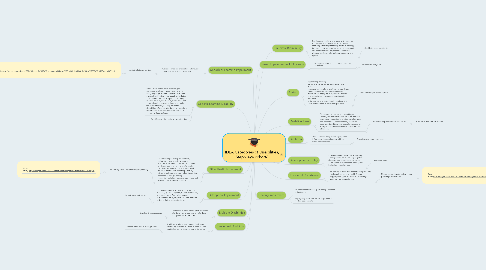
1. Intellectual Disability
1.1. Significantly subaverage general intellectual functioning. Deficits in adaptive behavior and manifested during the developmental period,
1.1.1. Ebooks interactive & talking books
2. Multiple Disabilities
2.1. simultaneous impairments (such as mental retardation-blindness, mental retardation- orthopedic impairment, etc.)
2.1.1. Switches & screenreaders
3. Orthopedic Impairment
3.1. congenital anomaly, impairments caused by disease (e.g., poliomyelitis, bone tuberculosis), and impairments from other causes (e.g.,cerebral palsy,amputations, and fractures or burns that cause contractures)
3.1.1. Wheelchairs, walkers, etc
4. Other Health Impairment
4.1. limited strength, vitality, or alertness, including a heightened alertness to environmental stimuli, that results in limited alertness. due to chronic or acute health problems suchas asthma, attention deficit disorder or attention deficit hyperactivity disorder,diabetes, epilepsy, a heart condition, hemophilia, lead poisoning, leukemia, nephritis, rheumatic fever, sickle cell anemia, and Tourette syndrome
4.1.1. Use sensory tools, test in small group setting
4.1.1.1. Case Study: http://images.pearsonassessments.com/images/ca/rti/downloads/Ellie.pdf
5. Specific Learning Disability
5.1. one or more of the basic psychological processes involved in understanding or in using language, spoken or written, that may manifest itself in the imperfect ability to listen, think, speak, read, write, spell,. brain injury, minimal brain dysfunction, dyslexia. does not include learning problems that are primarily the result of visual, hearing, or motor disabilities; of mental retardation; of emotional disturbance; or of environmental, cultural, or economic disadvantage.
5.2. Simplification of directions, extended time
6. Speech or Learning Impairment
6.1. stuttering, impaired articulation, a language impairment, or a voice impairment
6.1.1. Assistive listening devices
6.1.1.1. Case Study: http://corecapacities.com/wp-content/uploads/02%20Speech%20&%20Language%20Delay%20-%20Eric%20G.,%20Age%203%20-%20Tyler,%20T.pdf
7. Autism
7.1. significantly affecting verbal and nonverbal communication and social interaction, generally evident before age three. Other characteristics often associated wi th autism are engaging in repetitive activities and stereotyped movements, resistance to environm ental change or change in daily routines, and unusual responses to sensory experiences
7.1.1. Computerized spell-check support
8. Deaf-Blindness
8.1. [simultaneous] hearing and visual impa irments, the combination of which causes such severe communication and other developmental and educational needs that they cannot be accommodated in special education programs solelyfor children with deafness or children with blindness.
8.1.1. Deaf-auditory presentations with visuals
8.1.1.1. Blind-tape recorder for lectures
9. Deafness
9.1. child is impaired in processing linguistic information through hearing, with or without amplification
9.1.1. Open-book or open-note tests
10. Developmental Delay
10.1. a delay in one or more of the following areas: physical development; cognitive development; communication; social or emotional development; or adaptive [behavioral] development.
10.1.1. Preferential seating
11. Emotional Disturbance
11.1. An inability to learn that cannot be explained by intellectual, sensory, or health factors. inappropriate types of behavior or feelings under normal circumstances.
11.1.1. Use de-escalating strategies, mentor, proximity/touch control
11.1.1.1. Case Study:http://images.pearsonassessments.com/images/ca/rti/downloads/Megan.pdf
12. Hearing Impairment
12.1. An impairment in hearing, whether permanent or fluctuating
12.2. Highlighting important words or phrases in reading assignments
13. Traumatic Brain Injury
13.1. head injuries resulting in impairments in one or more areas, such as cognition; language; memory; attention; reasoning; abstract thinking; judgment; problem-solving; sensory, perceptual, and motor abilities; psychosocial behavior; physical functions; information processing; and speech.
13.1.1. checklists, visual assistants
14. Visual Impairment incl. Blindness
14.1. both partial sight and blindness, even with correction
14.1.1. Partial-video magnifier
